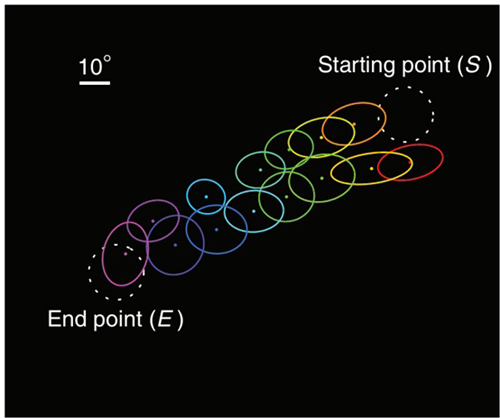Time:2012-02-14
On Jan. 22, 2012, Nature Neuroscience published online a research article entitled “Activity recall in a visual cortical ensemble”. This work was carried out by graduate students Sheng-jin Xu and Wan-chen Jiang in the laboratory of Neural Plasticity, under the supervision of Prof. Mu-ming Poo and a guest investigator Prof. Yang Dan from University of California, Berkeley.
An essential feature of memory recall is pattern completion, in which retrieval of memory is triggered by a subset of the cues present during learning. In particular, cue-triggered recall of a learned temporal sequence is useful for predicting future events based on current sensory inputs. Previous studies have strongly indicated the role of hippocampus in the learning and recall of temporal sequences. However, whether sequence learning can also occur in early sensory circuits remains unclear. In this study, the authors show recall of a simple motion sequence in the visual cortex of both anesthetized and awake rats. After repeated stimulation with a moving spot (conditioning) that evoked sequential firing of an ensemble of neurons in the primary visual cortex (V1), a brief flash at the starting point of the motion path (test cue) evoked more sequential firing similar to that evoked by the moving spot. In awake animals, such recall was observed during a synchronized ("quiet wakeful") brain state with large-amplitude, low-frequency cortical local field potential (LFP), but not in a desynchronized ("active") state with low-amplitude, high-frequency LFP. Such conditioning-enhanced, cue-evoked sequential spiking of a V1 neuronal ensemble may contribute to recall of a learned motion sequence and experience-based perceptual inference in a brain state-dependent manner.
This work was supported by the grants from the Chinese Academy of Sciences and the Ministry of Science and Technology, SSSTC Program.

Figure. Colored ellipses are receptive fields (RFs) of neurons recorded by a multielectrode array. White dashed circles are “Starting point” (S) and “End point” (E) of conditioning spot. During conditioning, a bright spot moving repeatedly from S to E orderly activated the neurons whose RFs fall along the motion path. After conditioning, a brief flash at S evoked more sequential firing similar to that evoked by the moving spot.
 附件下载:
附件下载: